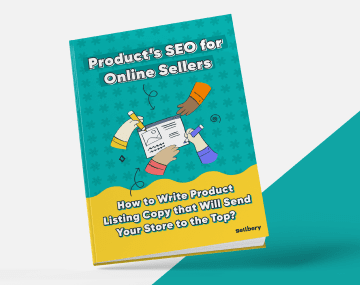
Discover how Sellbery and ERP tools help eCommerce sellers optimize inventory, sync supply with demand, and boost customer satisfaction.
Running an eCommerce business comes with its own rhythm. You know the rush when sales spike, the lull when things slow, and the stress when stock slips through the cracks. Inventory is the unsung hero that keeps your promises to customers. Get it right, and your brand looks polished. Get it wrong, and you risk delays, cancellations, and unhappy reviews.
This is where a closer look at how you handle stock can make all the difference. Modern platforms like Sellbery already help sellers juggle product listings across multiple channels, but the back end is just as important. That’s where tools like ECI Solutions Australia come into play, giving businesses a smarter way to sync supply with demand. Pairing these strategies together means fewer headaches, smoother workflows, and customers who keep coming back.
Why Inventory Is More Than Just Stock Counts
When people think about inventory, the first thought is usually numbers on a spreadsheet. But in reality, it’s the pulse of your business. Inventory determines whether your customers find what they want or move on to a competitor.
For online sellers, the challenge is multiplied by multiple marketplaces. One product could sell on Amazon, your own store, and a third-party site in the same hour. Without accurate syncing, it’s easy to oversell. The opposite is also a problem. Sitting on too much stock ties up your cash flow and leaves you scrambling to offload items before they expire or go out of trend.
Learning from Sell-by Dates
Take the example of grocery stores. Every item comes with a sell-by date. This forces managers to stay sharp, cycling out what’s about to expire while making sure shelves stay full.
eCommerce isn’t much different. While your products might not spoil like fresh produce, they still have a life cycle. Trends shift, customer preferences change, and technology moves forward. Treating inventory like it has its own “sell-by date” helps you avoid being left with goods that no one wants.
Where ERP Steps In
This is where Enterprise Resource Planning (ERP) solutions shine. Instead of juggling separate spreadsheets, warehouse notes, and sales reports, ERP systems pull everything into one place. Modules like M1 or e-automate let you track inventory in real time, link it with your sales data, and spot issues before they become problems.
Think of it as a bridge between your stockroom and your storefront. While your listing tools keep your products visible online, ERP keeps the back-end operations balanced. You get a clearer view of when to reorder, how much to keep on hand, and what items are moving faster than expected.
The Sweet Spot: Lean but Reliable
Optimizing inventory isn’t about keeping more or less. It’s about finding that sweet spot where supply meets demand with as little waste as possible. ERP platforms help by creating alerts, automating reorders, and even predicting demand based on historical sales.
For sellers, this means no more frantic calls to suppliers when you realize stock has hit zero. At the same time, you avoid sitting on piles of unsold products. The goal is a system that stays lean but never leaves customers hanging.
Small Steps That Add Up
You don’t need to overhaul your entire system in one night. Start by building habits that set you up for better inventory health. For example:
- Review sales reports weekly instead of monthly
- Add basic reorder alerts for fast-moving items
- Compare seasonal data to anticipate busy periods
These small practices, when paired with ERP syncing, create a structure that is flexible and reliable. Over time, you’ll notice smoother restocks and fewer costly surprises.
Making It Work for Multichannel Sellers
If you sell across platforms, syncing becomes even more critical. Each marketplace has its own pace, and buyers have little patience for out-of-stock errors. Tools like Sellbery ensure your listings are updated everywhere, while ERP ties the numbers back to your actual supply.
This combination turns inventory management from a guessing game into a guided process. It’s the kind of behind-the-scenes work customers never see, but they feel the difference in timely deliveries and accurate availability.
What Success Looks Like
A smartly optimized system doesn’t always look flashy. In fact, the best compliment might be silence—no complaints about missing products, no awkward backorders, and no wasted stock collecting dust.
Instead, you’ll notice the subtle wins: faster order fulfillment, better reviews, and more breathing room to focus on growth instead of damage control. That’s the real payoff of syncing supply with demand.

Photo by Antoni Shkraba Studio
Final Thoughts
Inventory can feel like a background task, but it shapes nearly every part of your business. By learning from simple concepts like sell-by dates and combining them with ERP-backed syncing, you can build a system that’s both lean and reliable.
When Sellbery’s multichannel reach meets ERP-driven insights, sellers find themselves with more control and less stress. Customers won’t know the details of what’s happening behind the scenes, but they will notice the consistency. And in eCommerce, that reliability is often the difference between a one-time purchase and long-term loyalty.
Was this news helpful?






 Yes, great stuff!
Yes, great stuff! I’m not sure
I’m not sure No, doesn’t relate
No, doesn’t relate



